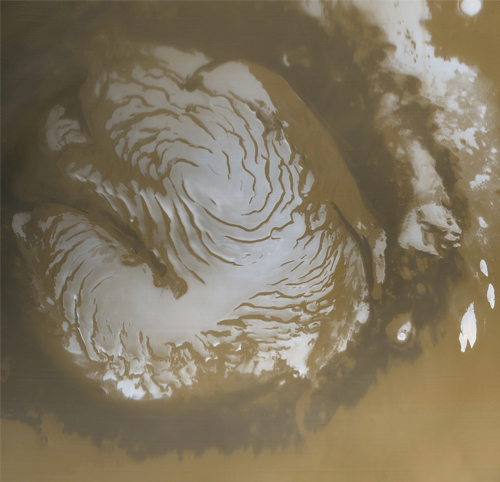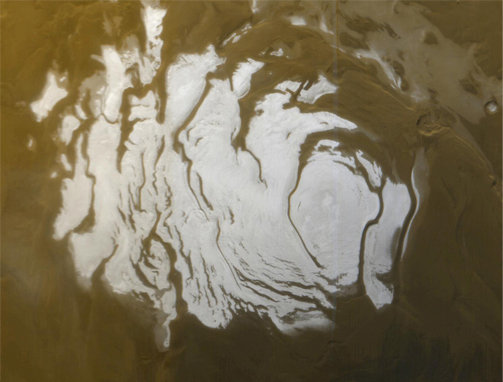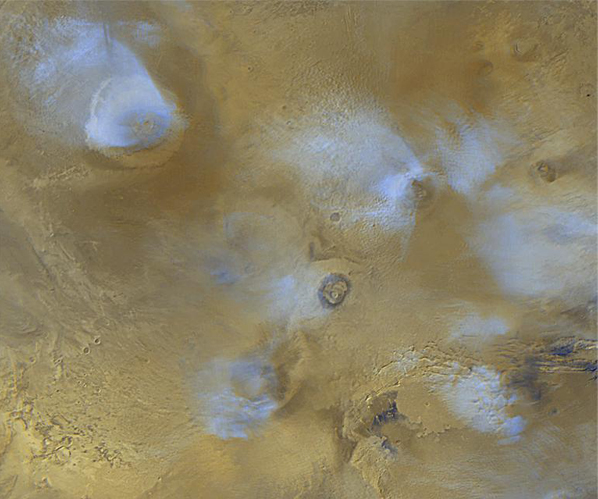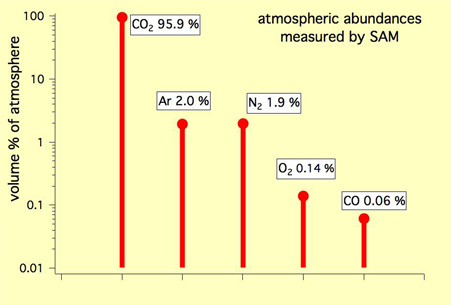Mars' Polar Caps
 | Mars North Pole Image acquired by Mars Global Surveyor (MGS) Mars Orbiter Camera (MOC) on March 13, 1999. The light-toned surfaces are residual water ice that remains through the summer season. The north polar cap is roughly 1100 kilometers (680 miles) across. |
 | Mars South Pole This is the south polar cap of Mars as it appeared to the Mars Global Surveyor (MGS) Mars Orbiter Camera (MOC) on April 17, 2000. The polar cap from left to right is about 420 km (260 mi) across. |
Mars has bright polar caps which make dramatic changes with the seasons. In the winter season for a pole, the cap becomes much larger as carbon dioxide freezes on the surface (dry ice). This happens when the temperature drops to about 150K. The cap gradually increases in size, extending down to about latitude 50° by the beginning of spring.
During the Martian summer, the caps recede but never completely disappear. The permanent cap at the Martian north pole is formed not of dry ice, but of ordinary water ice. The residual north polar cap has been measured to be about 1000 km in diameter. Measurements from Global Surveyor indicate a thickness of about 3 km for this ice cap.
The south polar cap is quite different: it is about 350 km in size and thicker than the north cap. It is formed of dry ice with an unknown thickness of water ice. For the south cap, the temperature never gets above 150K, so the dry ice survives the "summer". The caps are different because of the eccentricity of the Martian orbit. Its eccentricity is over five times that of the Earth, and larger than all planets except Mercury and Pluto. This results in the planet being significantly further from the sun during summer at the south pole.
Mars Concepts
Solar System Illustration
Solar System Concepts
Reference
Fraknoi, Morrison, Wolff
Ch 9
Mars Polar Caps wiki
| HyperPhysics********** Astrophysics | R Nave |

